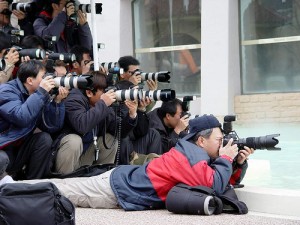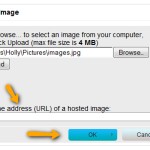The Lord of the Journalists: Fellowship of the Camera
March 1, 2011
“One can argue that the digital age has had a greater impact on photography than any other single skill or ability” – Mark Briggs
You are probably wondering why I am taking precious blog space to teach you about how to use a camera. How hard can it be to pick up a point-and-shoot camera and take a picture? Everyone knows how to do that, right? Wrong! When applying photography to journalism, you need to go much deeper than just picking up a camera and taking a picture. So lets get started!
Before you can become an expert photographer, there is some vocabulary you should learn:
- Pixel: visual representation of data in a digital image or graphic
- Megapixel: 1 million pixels which are used to measure the power of a digital camera
- Resolution: measurement of pixels in a digital image, or in terms of electronic data, a measurement of pixels that are available to the human eye
- Camera mode: controls the shutter speed. You are able to chose from a range of options, which will help you best capture a moment in a particular environment.
- Optical zoom: zoom provided by the lens. It is the only zoom a photographer should use.
- Digital zoom: used when you are out of optical zoom range. In Mark Briggs terms, it “basically just begins cropping the outside of the image to make it look like you are getting closer.”
Once you become fluent in this language you will need to determine which type of camera you want to use. There are two types, point-and-shoot and DSLR, both equally as good. Lets examine the benefits of each to help you better decide which one you would like to use.
- The point-and-shoot camera is fairly inexpensive, is more compact, and does not require extra equipment, as the lens, flash, and video camera’s are built in. It is also fairly simple to use, so you won’t need much experience to get decent pictures.
- The DSLR camera is extremely expensive, and complex to use. It does not come with built in features such as a flash, but it takes much better photographs than it’s point-and-shoot counterpart.
Now that you have chosen the camera to use, and you are out in the field, you need to acknowledge how to get the best possible pictures. The following list include some things you should take in to consideration before you take your pictures.
- Lighting: There are three types- ambient, flash lighting, and a mixture of flash and ambient lighting. The best photographs are taken only with ambient lighting, so if at all possible try not to use flash. According to Briggs, “cloudy and sunny days provide the best light for outdoor photography.”
- Location: don’t be afraid to get close to your subject. Val Hoepner, of the Freedom Forum Diversity Institute, quotes Robert Capa by saying, “if your pictures aren’t good enough, you aren’t close enough.”
- Time: Dedicating even just ten extra minutes to a photo session will give you that many more photographs to chose from when you go back to edit your photographs and place them in your story.
- Relationships: If you build a relationship with your subject, they will feel more comfortable around you and you will be able to better capture their natural emotions and movements.
After you have taken all your photographs, it is time for you to go to your computer and get busy organizing and editing them so you can quickly upload them for your audience. Adobe Photoshop is probably the single best tool for a photographer as you have access to both organizational tools and editing tools. Through Bridge a photographer is able to apply metadata, such as date, time, location, and copyright to their images. With Photoshop, he or she can can crop, resize, modify, tone and color correct, and save images to be uploaded to the web. Since Photoshop is so incredibly expensive, Mark Briggs offers several alternatives such as Photoshop Elements and Picasa.
Having completed the photography process, the only task you still have to do is to upload the images to your blog. Whether you upload them in a slideshow, or as single images there are some things you should remember. First, make sure to compress your images so they don’t require a lot of time to download. Second, make sure you use “intuitive alternate text” so viewers can learn about your photographs. Lastly, remember that your image has to be saved in an Internet format, it can’t just live on your computer. Once you have gone through all these steps, you are finally ready to upload your images for all the world to see and admire.
To learn more about photography and journalism, visit the following links:
The Future of Journalism in a Digital World
Entry Filed under: Briggs "Journalism Next" Chapter Reviews. Posted in Briggs "Journalism Next" Chapter Reviews Tags: Chapter six, Megapixels, Photography.



Trackback this post | Subscribe to the comments via RSS Feed